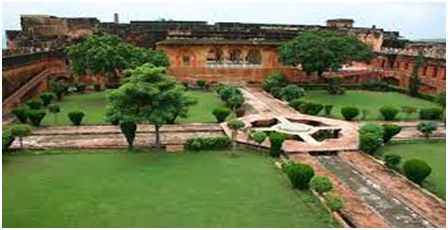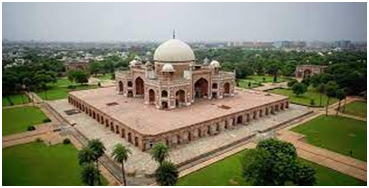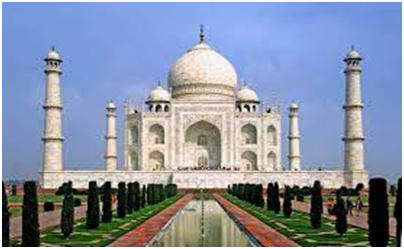- Books Name
- Social Science Book
- Publication
- Cognizance Publication
- Course
- CBSE Class 7
- Subject
- Social Science
Architecture and Significance
Temples, Gardens,Forts , building material
All the Mughal emperors were big fans of architecture.Babur was immensely attracted to beautifully laid out gardens and complexes.In his autobiography, Babur described his interest in planning and laying out formal gardens, placed within rectangular walled enclosures and divided into four quarters by artificial channels.These gardens are called ‘chahar bagh’ orfourgardens because of its symmetrical division into quarters.Each quarter is bound by an artificial wall. Continuing the legacy, Akbar, Shah Jahan and Jahangir all built chahar bagh in Kashmir, Delhi and Agra.

Tombs another different aspect of Mughal architecture. Akbar architectsturned to the tombs of his central asian ancestor, Timur.The central towering dome and the tall gateway were called pishtaqs.After the death of each Mughal emperor,they were buried in a tomb which was placed amidst a Chahar Bagh.This tradition was termed as ‘hashta bisht’ and translates to ‘eight paradises’. The building was constructed with red sandstone, edged with white marble. Shah Jahan was a staunch lover of beautiful archaeological wonders. During his reign, he constructed marvelous archaeological wonders.He built the famous ‘Diwan-i-aam ( the house of common people), and the diwan-i-Khas( the house of the elite).These halls are where Shah Jahan held meetings with the common people and special people respectively.These halls were called ‘Chihil Sutun’ or the ‘40 pillared hall’. His pedestal was called as the qibla pointing towards the direction which Muslims face while praying.The idea signified that the emperor was the God's representative on earth. He built the world famous Taj Mahal in Agra, Lal Quila and Jama Masjid in Delhi.

The connection between Royal justice and the imperial court was emphasised by Shah jahan in his newly constructed court in the Red Fort at Delhi.Behind the emperor's throne were a series of ‘pietra dura’ inlays that depicted the legendary Greek god Orpheus playing the lute. It was believed that Orpheus’s music could calm ferocious beast until they coexisted together peaceably.
Pietra dura -Coloured, hard stones placed in depressions carved into marble or sandstone, creating beautiful, ornate patterns.
In the early years of his reign, Shah jahan’scapital was at Agra.Shahjahan adapted the riverfront Garden in the layout of the Taj Mahal, the grandest architectural accomplishment of his reign.Here the white marble mausoleum was placed on the terrace by the edge of the river and the garden was to it's south.In the new city of Shahjahanabad that he constructed in Delhi, the imperial palace commanded the river-front. Only specially favoured nobles, like his eldest son Dara Shukoh- were given access to the riverfront. The commeners were compelled to build their houses away from the river Yamuna.


 Cognizance Publication
Cognizance Publication
